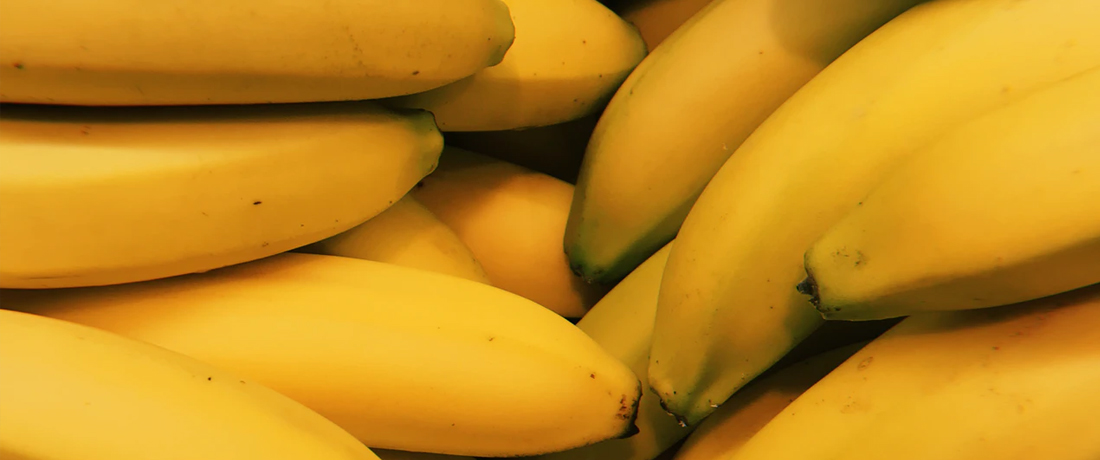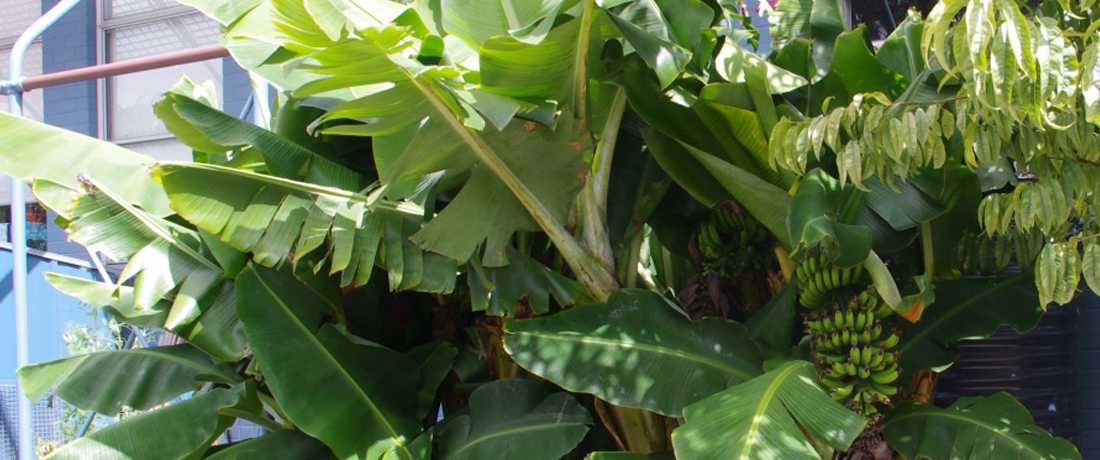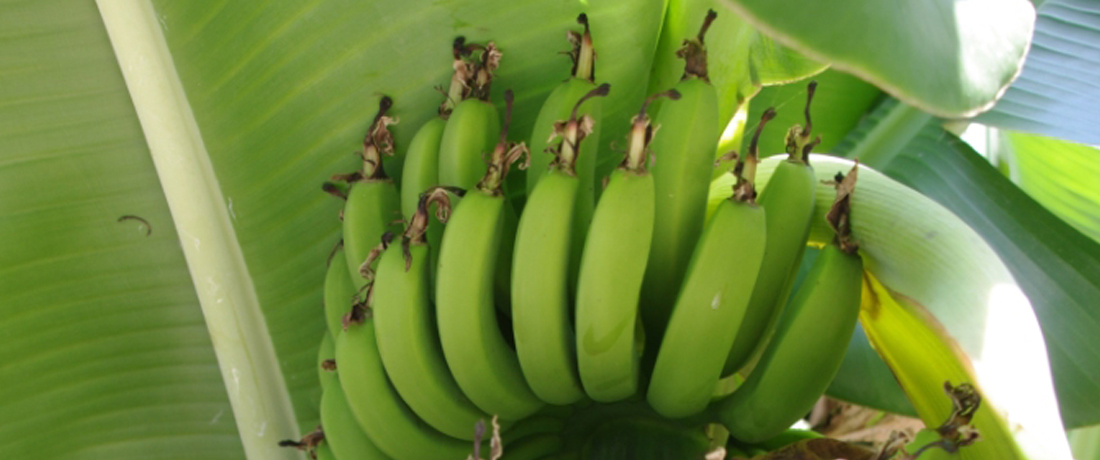
 Important note about plant availability. Important note about plant availability.There are hundreds of factsheets on our website provided for your information. Not all plants will be available at all times throughout the year. To confirm availability please call (03) 8850 3030 and ask for the nursery. |
Due to the seasonal nature of bananas we only have stock from December/January until April. We stock a range of varieties suited to Melbourne’s cooler climate including Goldfinger, Ducasse, Dwarf Red Dacca, Lady Finger, Valery, Rajapuri and Dwarf Cavendish (all while stocks last). As soon as the worst of the summer heat is over plant them in a warm micro-climate with plenty of time for them to establish themselves before winter. Read on for planting, growing, harvesting and cool-climate variety info.
For those of you wondering how well bananas can grow in Melbourne, the pictures below were taken at St Bernadette’s Primary School in Ivanhoe. They are rightfully very proud of their bumper banana crop!

Interesting banana fact number 1: Did you know that all modern bananas are clones? They are no longer able to reproduce by seed after having been cultivated for so long. Propagation is by division or tissue culture.
Interesting banana fact number 2: They are not trees but pseudo-stems made from tightly packed leaves. The new leaves grow up through the centre of the stem.
Interesting banana fact number 3: The banana is the largest herbaceous flowering plant!

Bananas require deep, rich soil which is well-drained, in a position which is in full sun for most of the day. A position close to a north facing wall is ideal. They require protection from cold winds and frost. Before planting, work the soil deeply over an area of about one square metre, incorporating lots of well-rotted compost or very old animal manure. After planting water thoroughly, apply a thick mulch to the worked area, keeping it away from contact with the stem of the plant. Cool Climate bananas are heavy feeders and as the plant grows apply fertiliser every six weeks to the soil surface above roots. Remove dead leaves regularly.
When the stem reaches maturity it will flower, which may be after 2 or 3 years. The first part of the flower will be male, known as the ‘bell’. This is followed by the female flowers, spirally arranged above the bell. The female flowers develop into fruit. The fruit are parthenocarpic, and they do not require pollination to develop. The stem will die once it has fruited, so remove it and a sucker growing from the base will take its place.
Suckers will appear from near the base of the main stem. Select one to be the next main stem and remove the others. It may take 2 or 3 years for the first fruit to be produced but after the fruit has been harvested the main stem should be cut down. The retained sucker will replace it as the main stem and the process is continued indefinitely or until the plant has moved so far from its original position that is has to be replanted.
Harvesting
The fruit is ready to be harvested once the bananas loose their ridges, become more rounded, and when the black withered remains of the flowers at the end of the bananas are dry and crumbly. The fruit must be fully ripe before eating, indicated by the whole fruit, including the stem, turning yellow. Brown flecks on the skin also indicate maturity. The whole bunch can be cut off or just one ‘hand’ can be harvested as required, and the bananas can then be allowed to ripen fully indoors.
Varieties that will fruit in Melbourne
 Important note about plant availability. Important note about plant availability.There are hundreds of factsheets on our website provided for your information. Not all plants will be available at all times throughout the year. To confirm availability please call (03) 8850 3030 and ask for the nursery. |
Dwarf Cavendish
Variety is a smaller growing form of the main commercial variety, Cavendish, and is a heavy cropper. Height to 2.5m.
Dwarf Red Dacca
Variety produces very sweet bananas which turn sunset colours as they ripen, going from a burgundy to orange. Height to 2m.
Ducasse
Variety (often refered to as the sugar banana) is sweet with an exquisite flavour. Height to 4m.
Goldfinger
Variety is the main dessert banana consumed in North America. It is a heavy cropper and is cold hardy. Height to 4m.
Lady Finger
Variety produces smaller fruit than most other varieties but it is very sweet and richly flavoured. Height to 3m.
Pisang Ceylon
Variety produces very sweet bananas which are bright yellow when ripe. Height to 3m.
Rajapuri
Produces high quality bananas and is very cold-hardy. Height to 2.5m.
Valery
Produces heavy crops of full sized bananas. Height to 4m.
